2013.08.15 16:44
Art vs. architecture
Looks like my next project is to design a Comfort Zone Inn. Here's the program:
The Comfort Zone Inn is a behavioural state within which a person operates in an anxiety-neutral condition, using a limited set of behaviours to deliver a steady level of performance, usually without a sense of risk. A person's personality can be described by his or her comfort zones within a Comfort Zone Inn. A Comfort Zone Inn is a type of mental conditioning that causes a person to create and operate mental boundaries. Such boundaries create an unfounded sense of security. Like inertia, a person who has established a comfort zone in a particular axis of his or her life, will tend to stay within that Comfort Zone Inn without stepping outside of it. To step outside their Comfort Zone Inn, a person must experiment with new and different behaviours, and then experience the new and different responses that occur within their environment
2013.08.18 11:44
Why do you think you're creative?
I'm just starting to read a collection of critical essays on James Joyce, and so far it's interesting to see how Joyce's unique creativity seems to induce a creativity from the essayists that they might not normally have. I've sometimes noticed a similar effect when reading critical essays on Duchamp. Philippe Duboy's Lequeu: An Architectural Enigma is perhaps the apotheosis of this kind of critical effect creativity.
Is it then a fair hypothesis that one's critical deliberation of a unique creativity might well engender an as yet uncommon creativity from oneself?
2013.09.07 10:35
Are you into modernism or do you also like historical architectural styles?
Obviously, I'm into (creating) 'dys' architecture styles: dyskenesic architecture, dyslexic architecture, dyslalic architecture. Hopefully, I'll continue to design even more dys-architecture styles.
2013.09.12 10:07
12 September
...the 'novel' whose work is just beginning now
What would happen if you mix two master architects with opposing styles?... ...as a very real and indeed interactive architectural novel where characters come in and out of the "narrative" both expectedly and unexpectedly, and the "story" meanders like one of those great rivers that sometimes overflows and floods and sometimes runs dry while raindrops are eagerly awaited.
"Nolli made no attempt to rectify inconsistencies of the Bufalini map when he prepared the reduced copy."
Piranesi's resultant redrawn plans suggest a methodology whereby the fragmentary plans of Bufalini were used as kernels of ancient fact that, in turn, galvanized newly interpreted redrawings of what once was.
In rereading 2666, while reading "The Part About the Critics" I thought, "Here we have a novel about the search for an author." The love was in the search as well, and the handicap was mostly avoided until the end (of that part). Then the next part begins with making fictitious love to a poet headed for insanity.
comparative scale :: stylistic contrasts :: programmatic comparisons :: exploring architectural potentials/exercising architectural virtuality :: recombinant architectures :: an other architectural history
Perhaps all this is making its way into the 'novel' whose work is just beginning now.
12 September
2013.09.18 11:34
18 September
What is an architectural idea? : Perhaps the real question is "What idea is an architecture?" I think that's the title of the novel I'm working on.
2013.09.19 12:27
19 September
It's only calendrical coincidence (within Quondam's own 'history') that brought these two image together:
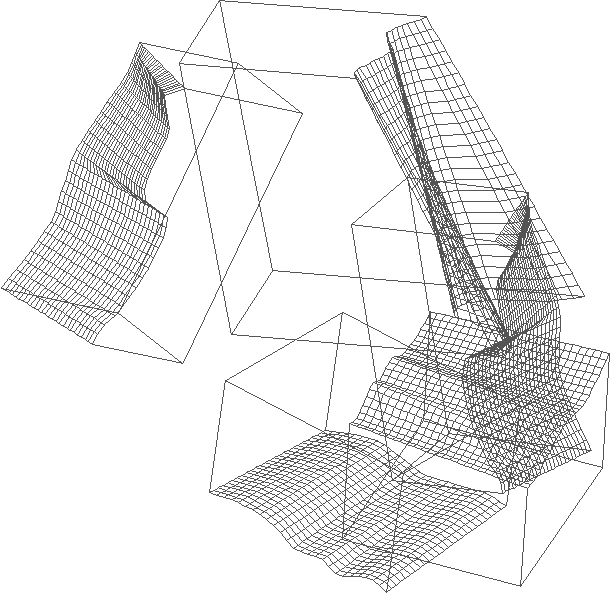
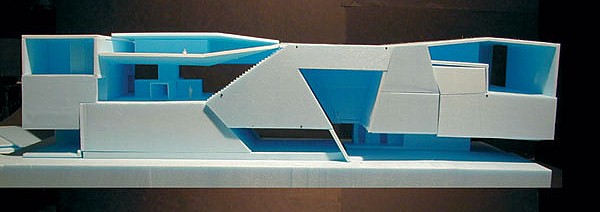
One is a 2000 wireframe axonometric view of 3-dimensionally collaged deformed cubes, and the other is the 2001 Flick House I project by OMA.
Now I'm imagining the wireframe view as a 3-dimensional sectional diagram of a some new residential project I might pursue.
| |
I'm not really working on a novel, but I might end up having written one. The idea arose over two weeks ago:
2013.09.03
started compiling plans [from Quondam's collection] that relate to Stirling's architecture; I can see something akin to a novel coming together in terms of how all the designs/projects interrelate.
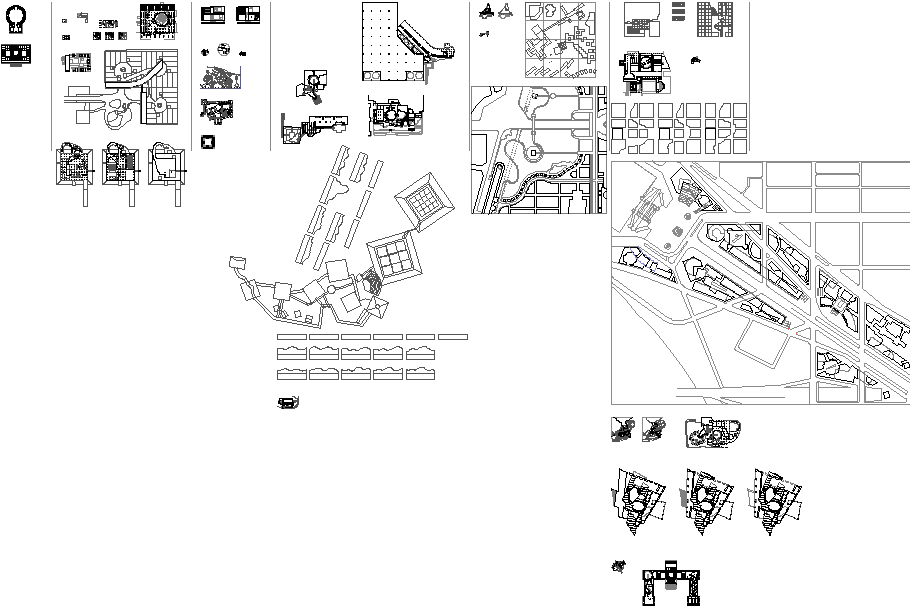
Borrowed some books (from the Free Library) about "novel writing." Read "The opposing missions of the various characters create the plot" this morning. Then thought, "Apposing missions of the various architectures creates the plot."
Herzog at Columbia said, "Stirling lost his way" and "Rossi lost his way." I ask, "Labyrinth, wo bist du?"
Most of the "characters" in almost order of appearance and only sometimes in scale to each other:

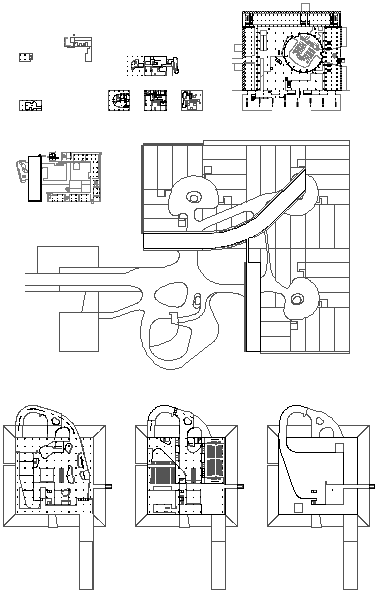
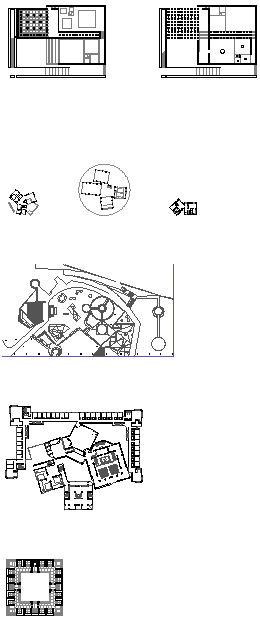
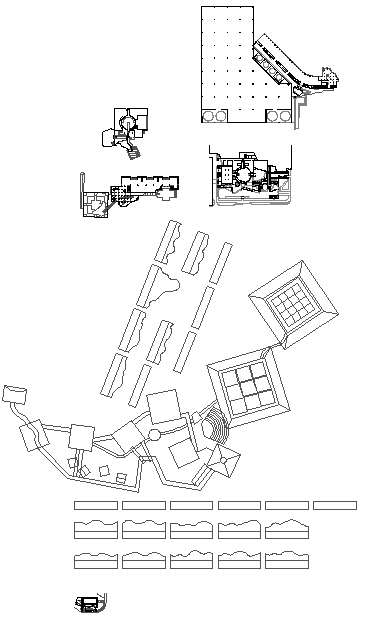
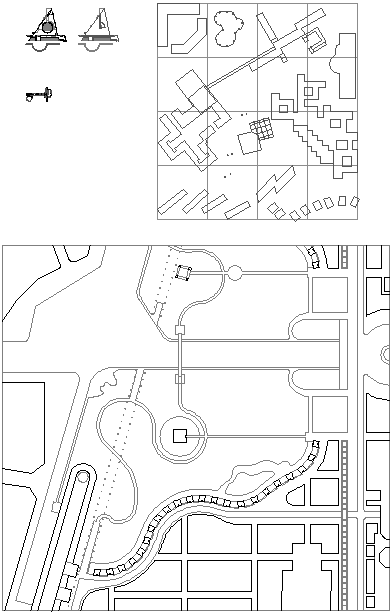
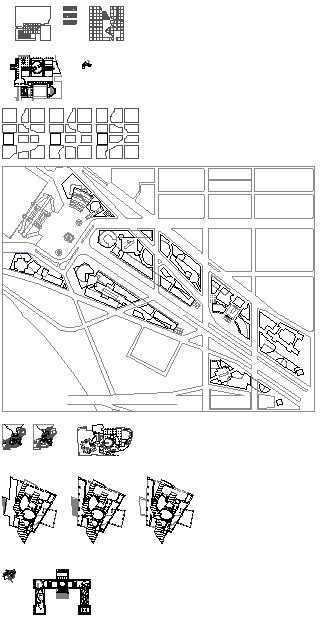
And add Piranesi's rendition of the Triumphal Way within the Ichnograpgia Campus Martius.
While composing this piece, I recognized a strong conceptional affinity between Herzog & de Meuron's 2005 Espacio Goya and Quondam's 2007 Cut & Paste Museum. Go figural.
|